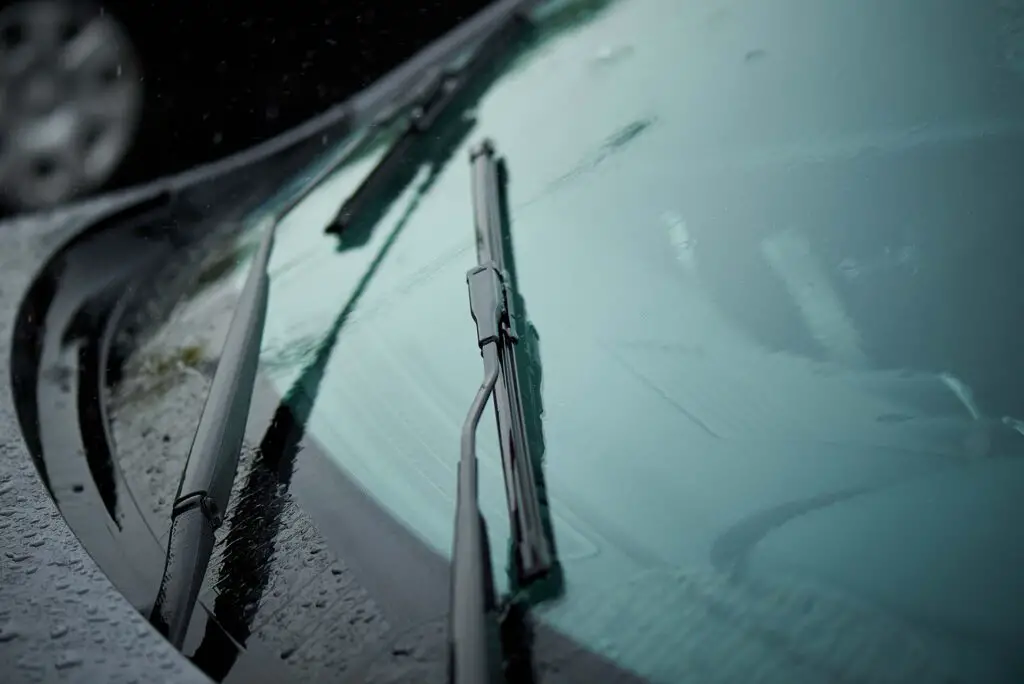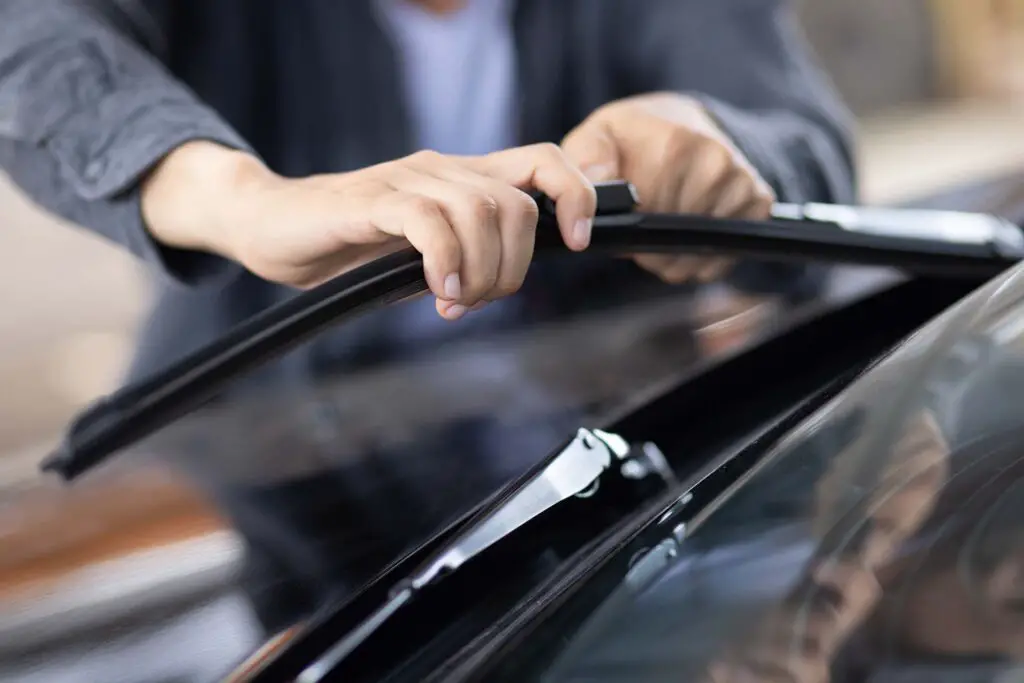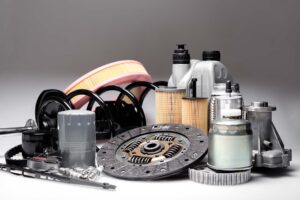Have you ever wondered about the purpose of the black dots on a windshield? These seemingly minor features are actually key components of modern automotive design, blending functionality with aesthetics. In this blog post, we’ll take a deep dive into the world of windshield technology, unraveling the mystery behind these black dots and exploring their significance in enhancing driving safety, comfort, and overall vehicle design.
Start With the Basics – What Are the Black Dots on My Windshield Behind Mirror
Many people think that a windshield is just a glass barrier. However, it’s a marvel of engineering designed to offer clarity, durability, and safety. From the early days of motoring, where windscreens were a luxury, to today’s high-tech world, the evolution of cars and windshield design reflects the advancements in automotive technology and materials science. This being said, let’s explore the world of windscreen design and explain how these essential components of our vehicles have been crafted to meet the demands of both functionality and safety.
Windshield Dot Pattern – Understanding the Construction and Materials
Modern windscreens are a testament to engineering ingenuity, comprising multiple layers – two sheets of glass encase a layer of polyvinyl butyral (PVB), a plastic interlayer. This composition offers resistance but also the ability to hold together when shattered, preventing injury from sharp glass fragments.
But, have you ever observed the common pattern of black dots around the windshields of nearly every car? This design is far from accidental. These black dots, also known as frits, are not arbitrarily placed. They adhere to a halftone pattern.
This technique allows a gradient transition from the dense black frit band to the transparent glass. Upon closer inspection, you’ll see that the dots gradually decrease in size and increase in spacing. This method makes the transition from the opaque black edge to the clear glass smoother and more visually appealing.
Evolution of Windshield Technology
The history of windscreen technology is a journey of innovation driven by the quest for safety and visibility. Back in the day, Edouard Benedictus, a French artist and scientist invented a shatter-proof glass that we today use as a windscreen. Despite this breakthrough, the costliness of his method rendered it impractical for extensive automotive applications.
This evolution set the stage for the integration of features like the black dots, a seemingly minor yet crucial element that underscores the intricate balance between design and functionality. Today, it’s rare to come across a vehicle without the small frits on its windscreen. Yet, before the 1950s, vehicles predominantly used metal trims to secure the windshield.
The transition to using adhesives for attaching the windscreen to the car’s frame occurred during the 1950s and 1960s. This change led to the introduction of frits, designed to safeguard the adhesive.

Unveiling the Purpose of Black Dots on Windshields
The black dots on windscreens, often overlooked, play a significant role in both functionality and design. These frits are not merely decorative but are intricately designed to enhance the driving experience in ways that are not immediately apparent. Far from serving merely decorative purposes, the origin of these black bands and frits traces back to the 1950s and 1960s.
This period marked a shift by automobile manufacturers from using metal trims to adhesives for securing glass. Surprisingly, frits fulfill four distinct roles. Here’s the purpose behind these dots, revealing their importance in modern windshield design.
The Science Behind the Frits
Frits on a car window, strategically placed around the edges, serve several technical purposes. Primarily, the frits have innovative sun glare reduction techniques. This means they help in reducing sun glare, which can be a significant hazard while driving.
The gradient pattern created by these dots allows for a smoother transition from the tinted glass that blocks sunlight to the clear central part of the windscreen, thereby reducing eye strain. Moreover, they play a role in windshield temperature control, absorbing and dissipating heat to prevent distortion of the glass and the car’s interior from excessive heat exposure.
Aesthetic and Functional Balance
Beyond their technical benefits, the frits contribute to the aesthetic appeal of the glass, offering a sleek, finished look that complements the vehicle’s overall design. They provide a seamless transition between the windshield’s transparent and opaque parts, enhancing the four-wheeler’s exterior appearance while fulfilling their functional roles.

The Frit – A Closer Look at the Black Dot Band
The black frit is a critical component of your vehicle’s windows, playing multiple roles that extend beyond mere decoration. The frit is made from ceramic paint that is applied to the windshield’s perimeter and then baked into the glass. This process ensures that the frit is permanently fused to the windscreen, providing a durable, opaque border.
The materials and methods used in creating the frit are designed to withstand extreme temperatures and environmental conditions, ensuring the longevity and durability of the windscreen. Apart from housing the black dots, the frit is an important component of the structural integrity of the windshield.
It provides a surface that enhances the adhesion of the windshield to the vehicle’s frame, contributing to the overall rigidity and stability of the four-wheeler. Additionally, the frit provides UV protection in cars. So, if you want to keep this feature active, ensure you use some of the best washer fluids for your car glass. Personally, my number one product is HS 29.606 Bug Wash Fluid.

What Are the Black Dots on a Windshield Beyond Aesthetics
When it comes to the practical benefits of frits, it’s important to know that these aren’t just for aesthetic purposes. They embody the synergy between design and functionality, offering tangible benefits that enhance the durability and safety of windscreens.
The design and materials of the dots and frit band also play a crucial role in safety by reducing exposure to UV light and helping maintain a comfortable cabin temperature. This not only contributes to passenger comfort but also enhances safety by ensuring the driver’s visibility and concentration are not compromised by excessive heat or glare.
When Should You Consider Getting a New Windshield?
Even though you regularly use some cleaning solutions, sometimes replacing these amazing features is just inevitable. But don’t worry, it’s not the most expensive vehicle repair you’ll have to deal with. It’s because the absence of the black dots doesn’t necessarily mean you need to replace the whole windscreen.
Yet, several indicators suggest the need for a replacement. A clear sign that you need a new windshield is the presence of a crack. If the crack obstructs your vision, spans more than half the windshield, or reaches the perimeter, it’s crucial to get it replaced or repaired promptly. Ignoring it may lead to the crack expanding.
Additional cues that it’s time for a new windshield are pitting, also known as sandblasting, which results from constant exposure to dust, dirt, and sand causing tiny blemishes on the glass, and a white haze around the edges, typically caused by hail and snow damage. Unsure whether your windshield needs replacing? No worries. If you’re uncertain, it’s always best to consult with a professional who can inspect your windscreen and provide guidance.

Explore the Latest Automotive Glass Technology
In recent years, there has been considerable advancement in the field of automotive glass technology. Innovations such as intelligent windshields, expansive panoramic sunroofs, self-tinting windows, and Head-Up Displays (HUD) are revolutionizing the way we experience driving.
Panoramic Sunroof
The panoramic sunroof brings the outdoors in, enriching the driving experience with natural light and fresh air while contributing to an enhanced sense of space. Advanced models come equipped with automatic temperature control, UV-blocking filters, and integrated LED lighting, combining functionality with luxury. These features work together to maintain a comfortable interior climate, protect against the sun, and create an inviting atmosphere within the vehicle.
Self-Tinting Windows
Offering a blend of privacy, protection, and efficiency, self-tinting windows adapt to changing light conditions to keep the vehicle’s interior private and comfortable. By blocking harmful UV rays, they protect passengers from excessive heat and radiation while also helping to maintain cooler cabin temperatures. This not only enhances passenger comfort but also contributes to reduced energy consumption by lessening the reliance on air conditioning.
Head-Up Display (HUD)
The HUD technology represents a significant advancement in reducing driving stress, projecting essential information directly onto the windscreen. This allows drivers to access important data such as speed and navigation directions without diverting their gaze from the road, thereby reducing distraction and enhancing focus on driving.
Augmented Reality
Integrating augmented reality into vehicle windshields marks a leap forward in automotive technology, offering a more intuitive driving experience. By displaying real-time information about the environment and navigation directly on the windscreen, drivers can receive contextual data about their surroundings, making navigation easier and driving safer. This technology promises to redefine the way we interact with our vehicles, merging digital information with the real world for an enriched driving experience.
The Future of Windscreen Design – Innovations on the Horizon
As we look to the future, the evolution of windscreen technology promises even more innovations that will continue to enhance driver safety and comfort. From augmented reality displays to advanced materials that can self-heal or change transparency, the potential for further advancements is boundless.
The journey of the windshield, from a simple glass panel to a complex, multifunctional component, underscores the relentless pursuit of automotive excellence. As technology progresses, so too will the features that we now see as standard, opening new avenues for innovation and design in automotive glass.
Frequently Asked Questions About Frits
What Are the Black Dots on My Windshield For?
The black dots on your windscreen, part of the frit, play several roles. They aid in reducing sun glare, assist in the temperature control of the glass, and provide a visual aesthetic that smoothly transitions from the opaque areas of the glass to the transparent ones. Additionally, they help in the even temperature distribution during the windshield’s manufacturing process.
How Do Black Dots on the Windshield Improve Vehicle Safety?
Black dots on the windshield contribute to vehicle safety by reducing sun glare, which can potentially obstruct the driver’s vision. They also help maintain the integrity of the windshield’s adhesive by protecting it from UV rays, ensuring the windshield remains securely attached to the vehicle’s frame, thus preserving the vehicle’s structural integrity in case of an accident.
Can the Black Dots on Windshields Fade or Wear Out Over Time?
Yes, the frits can fade or wear out over time, especially with prolonged exposure to the elements and UV rays. However, this is a gradual process and the durability of the dots largely depends on the quality of the windscreen and the conditions to which it is exposed.








